-
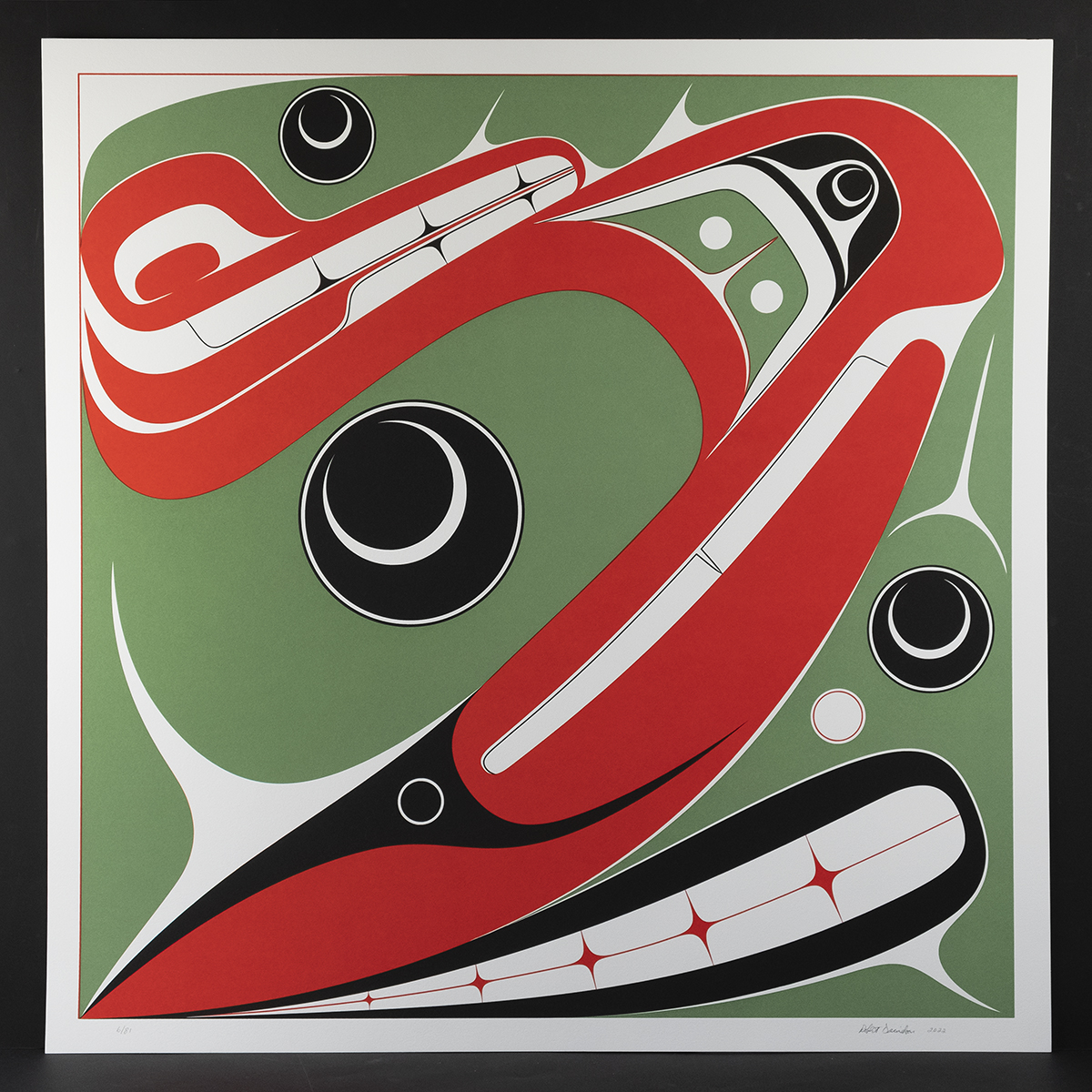 Fisherman’s DelightLimited Edition Serigraph
Fisherman’s DelightLimited Edition Serigraph- 30"h
- 30"w
Contact Us to Special Order -
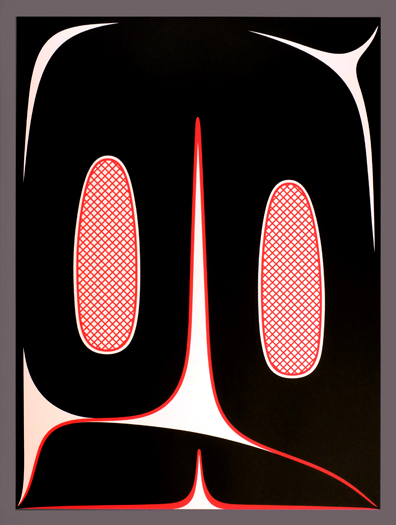 Kuugan jaad Giidii (Daughter of Mouse Woman)Limited Edition Serigraph
Kuugan jaad Giidii (Daughter of Mouse Woman)Limited Edition Serigraph- 25"h
- 19"w
$1,200 -
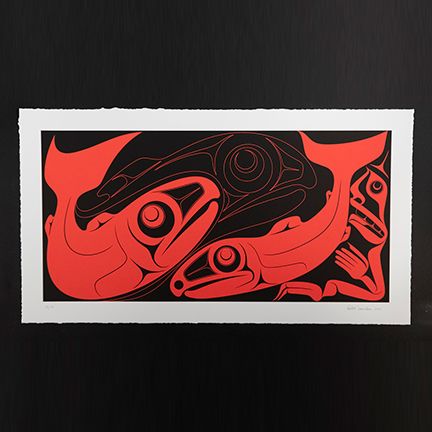 sk’ug sdang (Two Dog Salmon)Limited Edition Serigraph
sk’ug sdang (Two Dog Salmon)Limited Edition Serigraph- 16"h
- 29"w
$1,250 -
 Happy BlowholeLimited Edition Cast Bronze
Happy BlowholeLimited Edition Cast Bronze- 12"h
- 14.25"w
- 14"d
$28,000 -
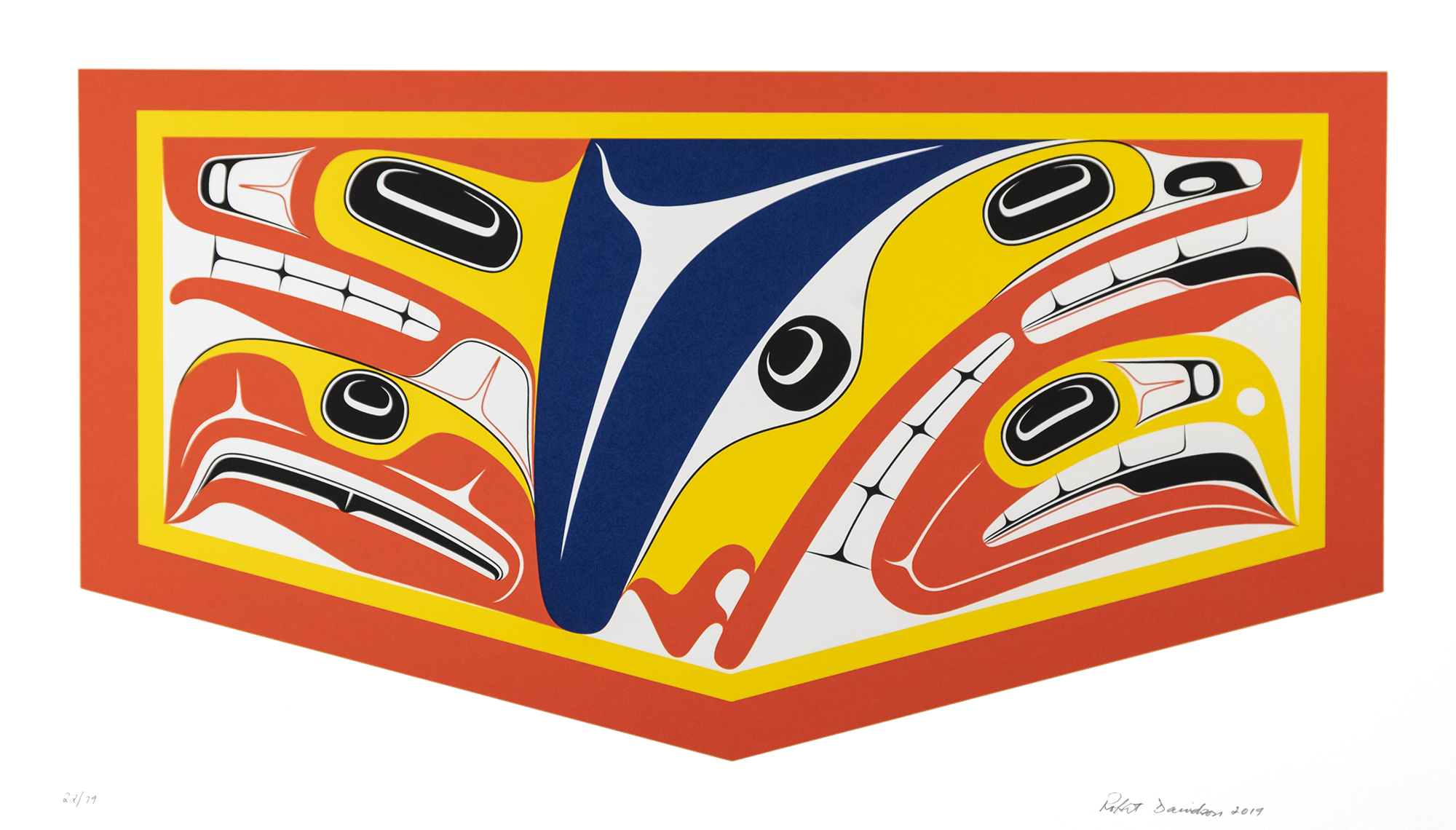 Supernatural BeingsLimited Edition Serigraph
Supernatural BeingsLimited Edition Serigraph- 17"h
- 29.13"w
$1,390 -
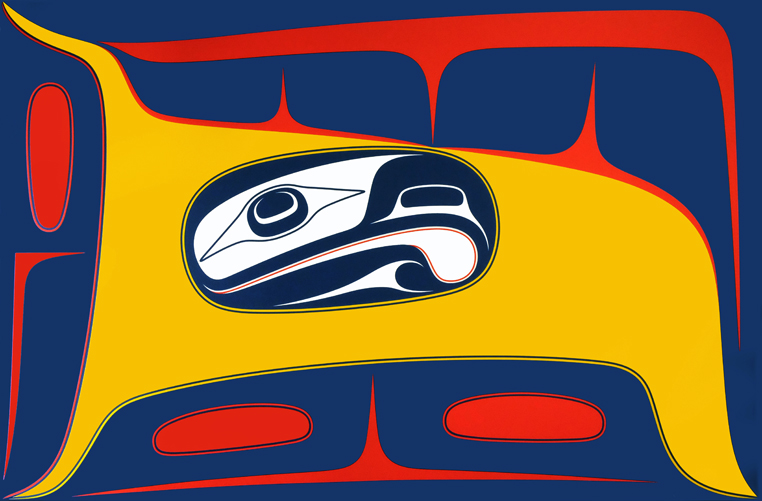 Bird in the AirLimited Edition Serigraph
Bird in the AirLimited Edition Serigraph- 26.5"h
- 40"w
$1,800 -
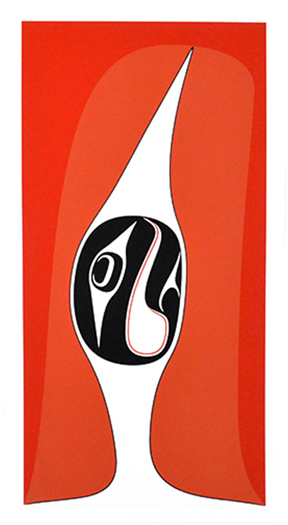 Wintertime – 2015Limited Edition Serigraph
Wintertime – 2015Limited Edition Serigraph- 29"h
- 15.5"w
Contact us to Special Order -
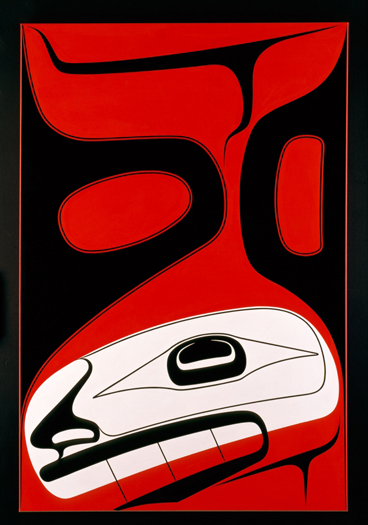 Canoe Breaker: Southeast Wind’s Brother – 2015Limited Edition Serigraph, AP Edition
Canoe Breaker: Southeast Wind’s Brother – 2015Limited Edition Serigraph, AP Edition- 40"h
- 26.75"w
$5,000 CAD - Contact us to special order -
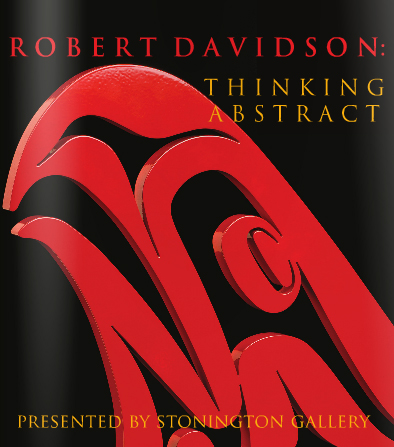 Robert Davidson: Thinking Abstract Digital CatalogueDigital CatalogFree to Read Online
Robert Davidson: Thinking Abstract Digital CatalogueDigital CatalogFree to Read Online -
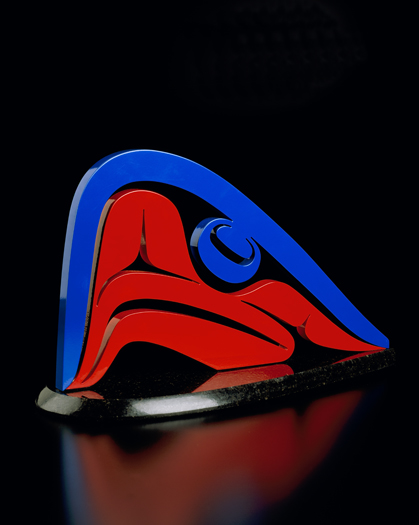 Bird in the AirLimited Edition Powder-Coated Aluminum, Granite Base
Bird in the AirLimited Edition Powder-Coated Aluminum, Granite Base- 11"h
- 17.5"w
- 7.25"d
$7,500 CAD | USD to be calculated on day of sale (approx. $5,775) -
 I am You and You are Me (2008)Serigraph
I am You and You are Me (2008)Serigraph- 28"h
- 15"w
Contact us to Special Order -
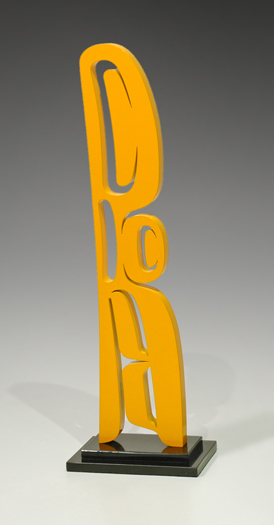 T’samuus (2009)Aluminum, Granite Base
T’samuus (2009)Aluminum, Granite Base- 18"h
- 5.75"w
- 3.5"d
$7,000 CAD | USD will be calculated day of sale (approx. $5,390) -
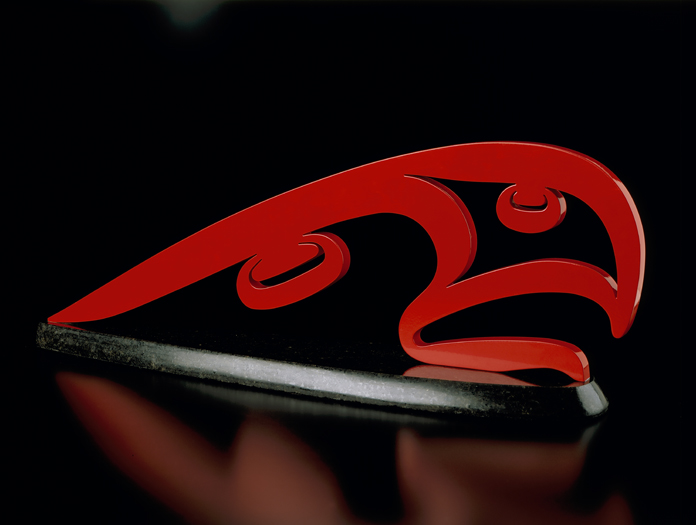 Eagle (2013)Limited Edition Powder-Coated Aluminum, Granite Base
Eagle (2013)Limited Edition Powder-Coated Aluminum, Granite Base- 10.5"h
- 25.6"w
- 5.75"d
$7,000 CAD | USD will be calculated day of sale (approx. $5,390) -
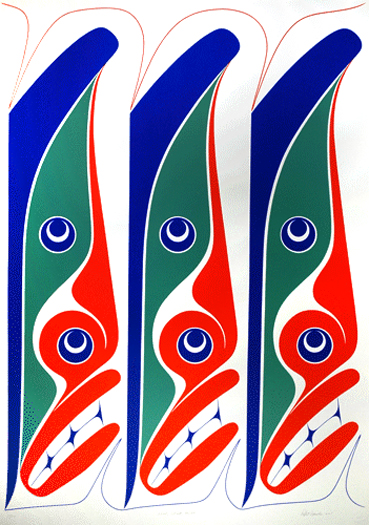 Halibut, Halibut, Halibut (2001)Limited Edition Serigraph
Halibut, Halibut, Halibut (2001)Limited Edition Serigraph- 49"h
- 36.38"w
Contact us to Special Order -
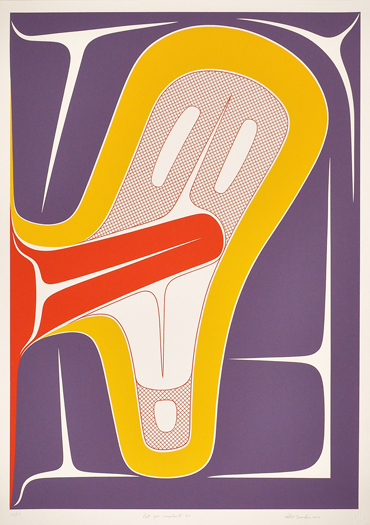 Put Your Complaints ‘Ere (2002)Limited Edition Serigraph
Put Your Complaints ‘Ere (2002)Limited Edition Serigraph- 34.25"h
- 24.25"w
Contact to Special Order -
 Sgaan Sganwee (2002)Limited Edition Serigraph
Sgaan Sganwee (2002)Limited Edition Serigraph- 19.5"h
- 20.5"w
Contact us to special order
-
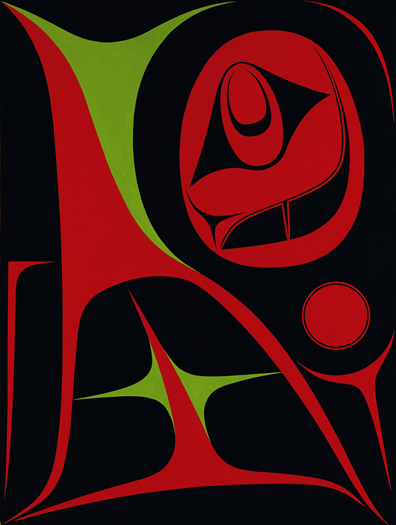 U and Eye (2013)Limited Edition Serigraph
U and Eye (2013)Limited Edition Serigraph- 40.25"h
- 30.25"w
SOLD -
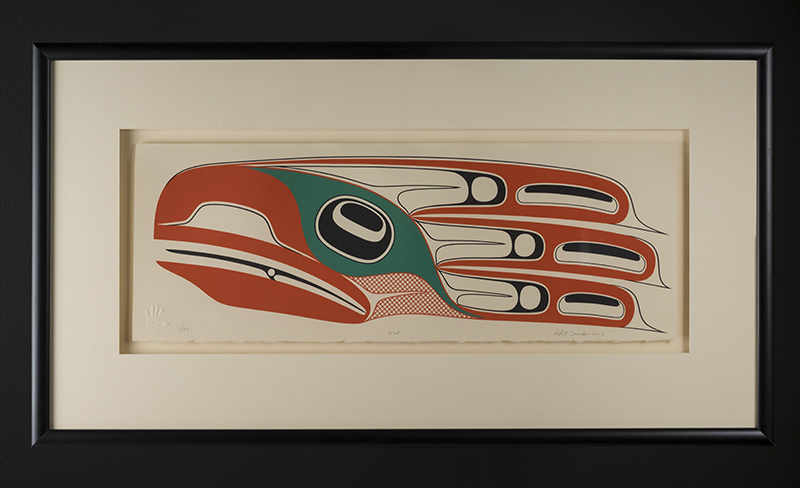 Wiid (Warbler) (2002)Limited Edition Serigraph, Conservation Framed
Wiid (Warbler) (2002)Limited Edition Serigraph, Conservation Framed- 17"h
- 31"w
SOLD -
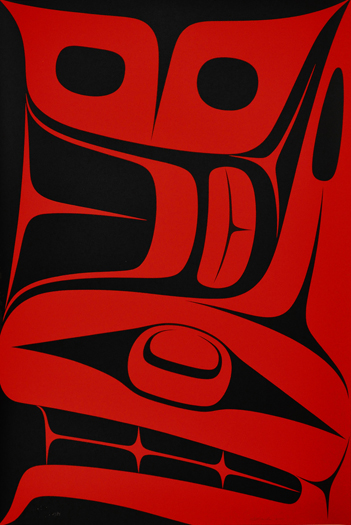 Southeast Wind (2004)Limited Edition Serigraph
Southeast Wind (2004)Limited Edition Serigraph- 39.88"h
- 26.50"w
SOLD -
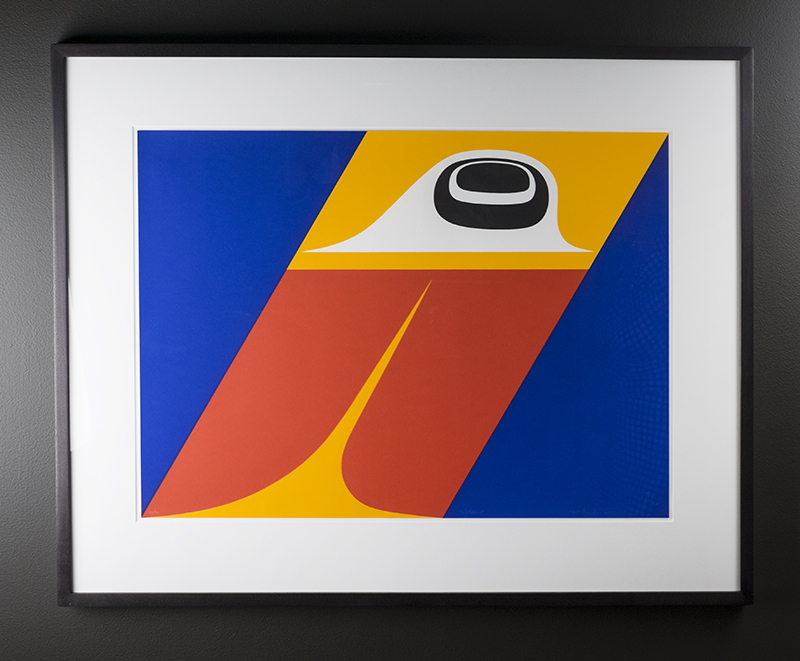 Entitlement – 2006 (Sold-Out Edition)Limited Edition Serigraph with Conservation Framing
Entitlement – 2006 (Sold-Out Edition)Limited Edition Serigraph with Conservation Framing- 31"h
- 39"w
SOLD -
 Eagle’s Call (2013)Limited Edition Powder-Coated Aluminum, Granite Base
Eagle’s Call (2013)Limited Edition Powder-Coated Aluminum, Granite Base- 15"h
- 16.75"w
- 6.75"d
SOLD -
 Beaver (1972)Limited Edition Serigraph, Conservation FramedSOLD
Beaver (1972)Limited Edition Serigraph, Conservation FramedSOLD -
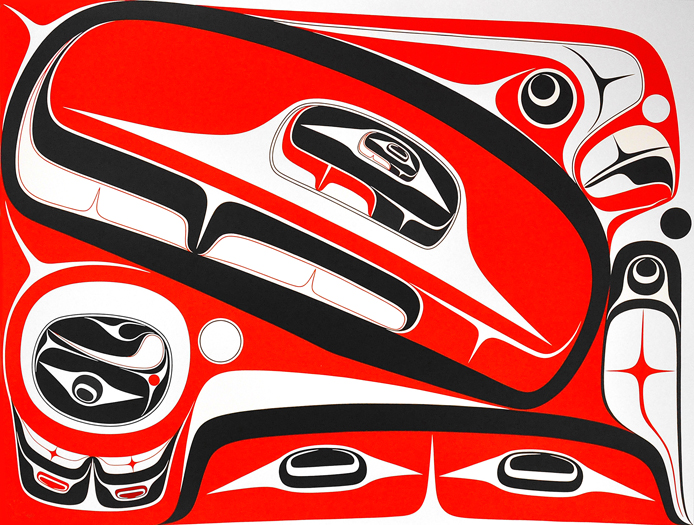 Killer Whale (2004)Limited Edition SerigraphSOLD
Killer Whale (2004)Limited Edition SerigraphSOLD -
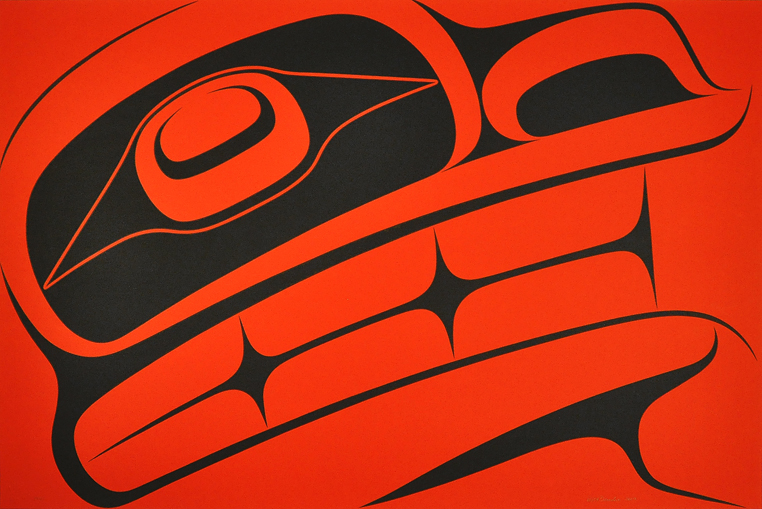 Grizzly Bear (2009)Limited Edition SerigraphSOLD
Grizzly Bear (2009)Limited Edition SerigraphSOLD -
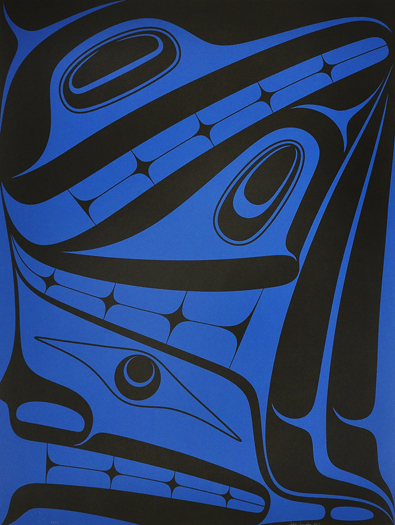 Shadows (2010)Limited Edition Serigraph, Conservation Framed
Shadows (2010)Limited Edition Serigraph, Conservation Framed- 46.25"h
- 35.88"w
SOLD -
 Two-Finned Killerwhale (1979)Limited Edition Serigraph
Two-Finned Killerwhale (1979)Limited Edition Serigraph
Conservation Framed- 25.75"h
- 32.63"w
SOLD -
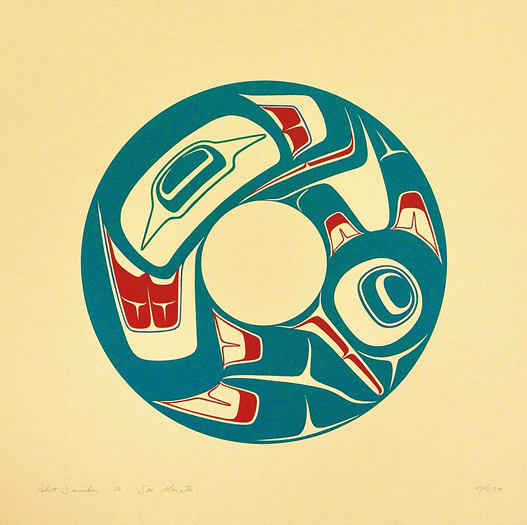 Sea Monster (1976)Limited Edition SerigraphSOLD
Sea Monster (1976)Limited Edition SerigraphSOLD -
 Wolf (1977)Limited Edition Serigraph, Conservation Framed
Wolf (1977)Limited Edition Serigraph, Conservation Framed- 8.75"h
- 24"w
SOLD -
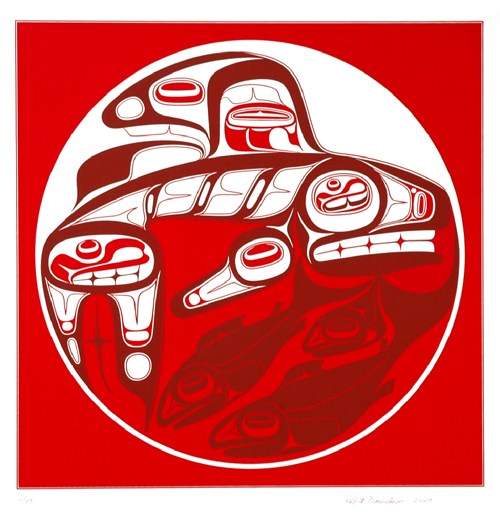 Salmon and KillerwhaleLimited Edition Serigraph
Salmon and KillerwhaleLimited Edition Serigraph- 16.25"h
- 15"w
SOLD -
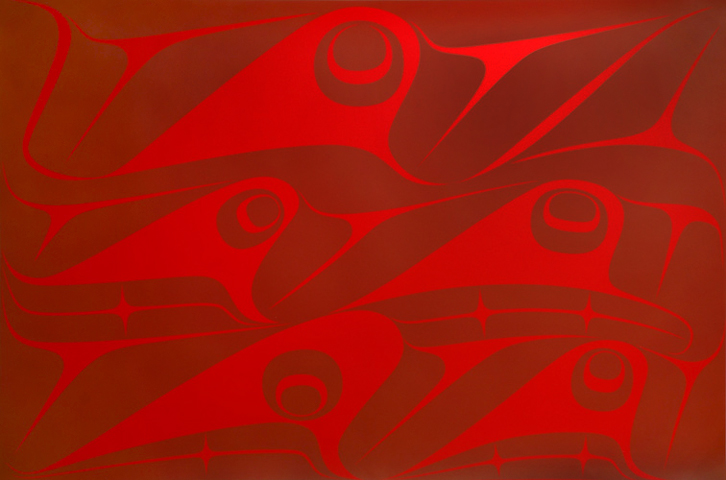 Occupied (2007)Limited Edition Serigraph, Conservation Framed
Occupied (2007)Limited Edition Serigraph, Conservation Framed- 30"h
- 45.5"w
SOLD -
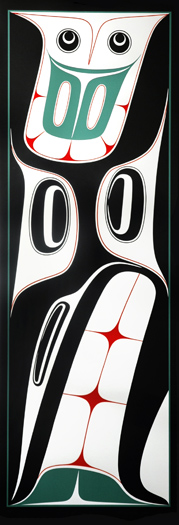 Looking at Asymmetry (2002)Limited Edition Serigraph, Conservation Framed
Looking at Asymmetry (2002)Limited Edition Serigraph, Conservation Framed- 48"h
- 21.13"w
SOLD -
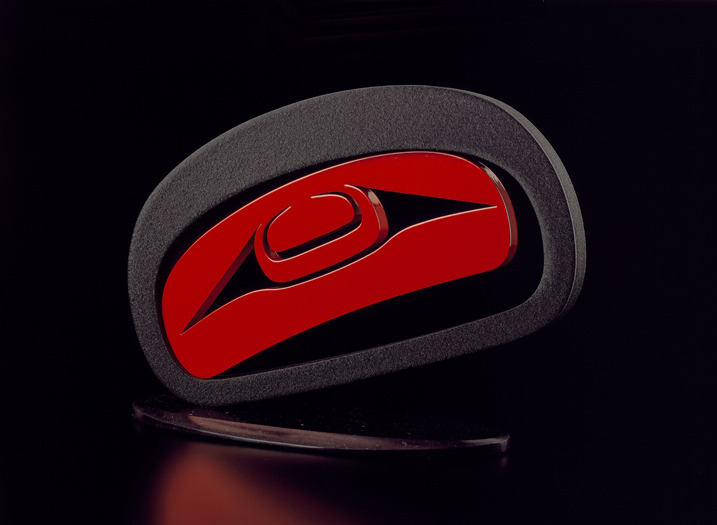 Salmon Trout Head Two (2013)Limited Edition Powder-Coated Aluminum, Granite Base
Salmon Trout Head Two (2013)Limited Edition Powder-Coated Aluminum, Granite Base- 10"h
- 13.5"w
- 5.75"d
SOLD -
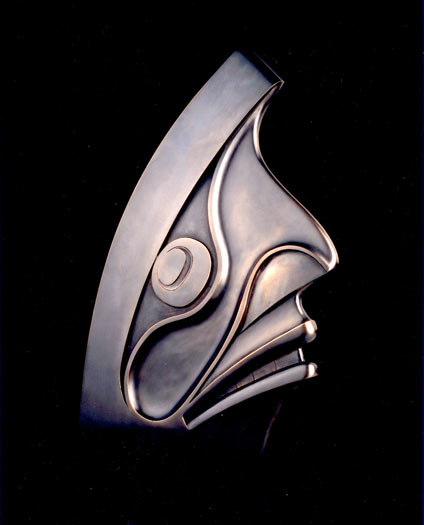 IdentityBronze
IdentityBronze- 25.5"h
- 16.75"w
- 8"d
SOLD -
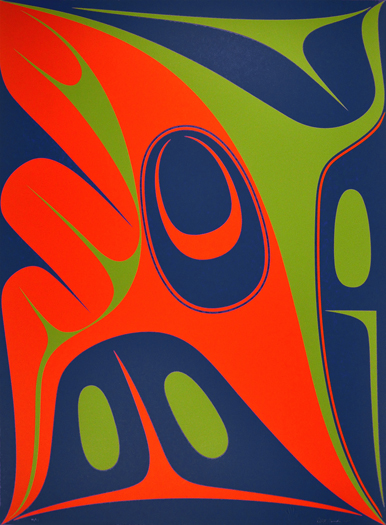 Fast Bird (2011)Limited Edition Serigraph
Fast Bird (2011)Limited Edition Serigraph- 40"h
- 30"w
SOLD -
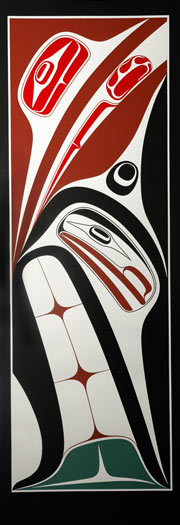 Are You Ready for the New LightSerigraph
Are You Ready for the New LightSerigraph- 40.5"h
- 14"w
SOLD -
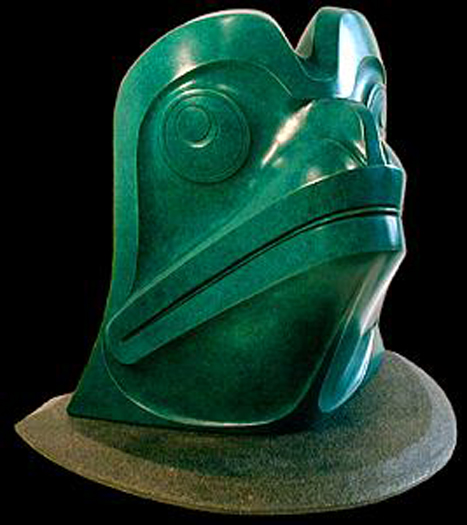 Crab of the WoodsBronze
Crab of the WoodsBronze- 16"h
- 18"w
- 13"d
SOLD -
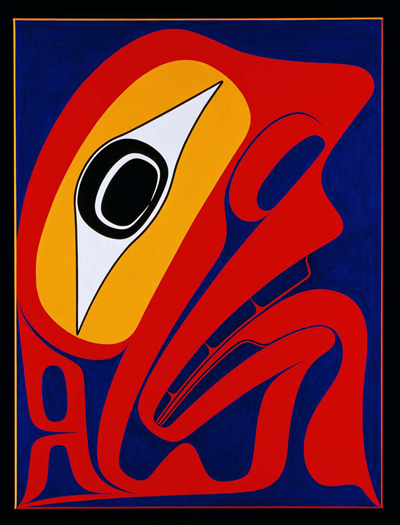 Watchman (2011)Limited Edition Serigraph
Watchman (2011)Limited Edition Serigraph- 40"h
- 30"w
SOLD -
 Split U (2006)Serigraph, Conservation Framed
Split U (2006)Serigraph, Conservation Framed- 36"h
- 45.88"w
SOLD -
 Half a SoulAcrylic
Half a SoulAcrylic- 49"h
- 21.5"w
SOLD -
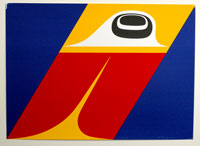 Entitlement (2006)Limited Edition Serigraph, Conservation Framed
Entitlement (2006)Limited Edition Serigraph, Conservation Framed- 28.13"h
- 36.25"w
SOLD -
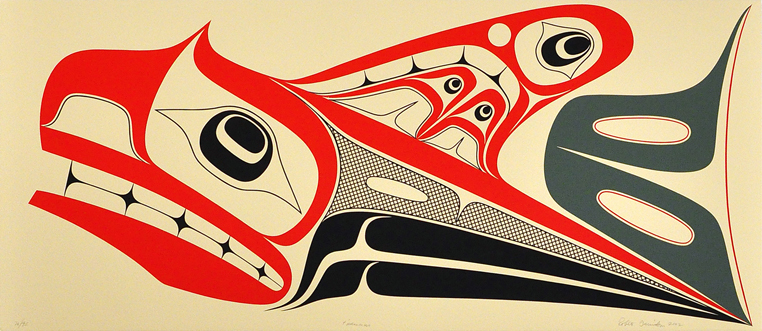 T’samuus (Sea Monster) (2002)Limited Edition Serigraph, Conservation Framed
T’samuus (Sea Monster) (2002)Limited Edition Serigraph, Conservation Framed- 12.5"h
- 28"w
SOLD -
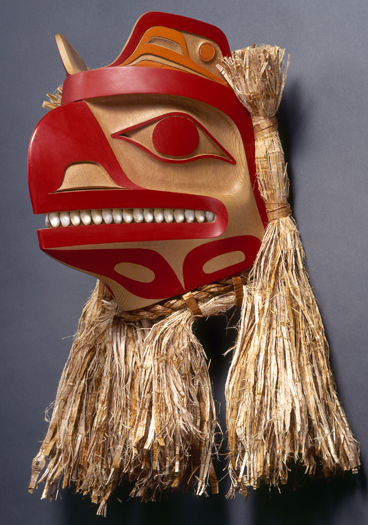 Wiid MaskRed Cedar, Acrylic, Cedar Bark, Opercula
Wiid MaskRed Cedar, Acrylic, Cedar Bark, Opercula- 19"h
- 15"w
- 10.5"d
SOLD
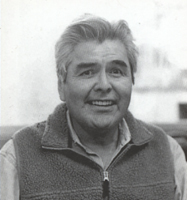
Robert Davidson is one of Canada’s most respected and important contemporary artists. A Northwest Coast native of Haida descent, he is a master carver of totem poles and masks and works in a variety of other media as a printmaker, painter and jeweler. He is also a leading figure in the renaissance of Haida art and culture. Davidson is best known as an impeccable craftsman whose creative and personal interpretation of traditional Haida form is unparalleled.
Robert Charles Davidson was born November 4, 1946 in Hydaburg Alaska. His Haida name is Guud San Glans/Eagle of The Dawn. He moved with his family to Massett on Haida Gwaii (Queen Charlotte Islands) in 1947 and lived there until 1965 when he moved to Vancouver to complete his education at Point Grey Secondary School. It was here that he first learned the fundamentals of silk-screening. In 1966 he met Bill Reid and, soon after, began an eighteen month apprenticeship that launched his career as an artist. Through Reid, he met anthropologist Wilson Duff and artist Bill Holm and learned much about the Haida people and their art. In 1967 he enrolled in the Vancouver School of Art, a place he credits for developing his drawing and design skills.
Davidson was surrounded by fine carving from an early age as both his father, Claude Davidson, and grandfather, Robert Davidson Sr., were respected carvers in Massett. His great grandfather was the famed Haida carver Charles Edenshaw. He began carving at the age of thirteen when his father insisted he carry on the family artistic tradition. Since that time, he has continued to explore the carved form in a variety of traditional and non-traditional media including bronze.
The artist returned to Massett in 1969 to carve and erect a forty-foot totem pole. His pole was the first to be raised on the Queen Charlotte Islands in approximately ninety years. Davidson’s work exhibits both a high degree of craftsmanship and a thorough understanding of traditional Haida sculpture and design. He consciously pushes his designs to find new solutions to the old Haida problem of not merely filling the space but relating the design to the total space as well as controlling the shape of the ground or negative space. He is now the consummate Haida artist, whose strong rhythms and personal style are recognizable and sought the world over.
“The purpose of my art is to express the contemporary life and meaning of my ancestral culture, that of the Haida people of Haida Gwaii (Queen Charlotte Islands). From the time I raised the first totem pole in this century in my home village of Massett, I have been committed to the use of cultural knowledge in order to celebrate the present as well as the past. As a bicultural Haida-Canadian artist, I draw upon my own experience in life to give personal and collective meaning to my work. The challenge is to create images that we can all relate to.”
Davidson’s first public commission was “The Three Watchmen,” a three-totem pole sculpture at the MacLean-Hunter Building in Toronto. This was soon followed by a commission for a four-foot bronze, titled “Raven Bringing Light to the World,” commissioned by the Canadian Museum of Civilization in Hull. A three-foot bronze frog and a second set of three poles were commissioned by Pepsico for its Sculpture Garden in New York State.
For more than forty years, Robert Davidson has worked as an artist and has produced an internationally acclaimed body of work. His art is found in a number of important private and public collections including the National Gallery of Canada in Ottawa, the Vancouver Art Gallery, the Canadian Museum of Civilization in Hull, Quebec, the Southwest Museum in Los Angeles and the Artists for Kids Gallery in North Vancouver. He has also received many honors for his accomplishments. In 1995 he received the National Aboriginal Achievement Award for his contribution to First Nations art and culture. He holds honorary degrees from the University of Victoria, Simon Fraser University in Burnaby, the Southern Methodist University in Dallas, Texas and the Emily Carr Institute of Art and Design in Vancouver. He has received the Order of British Columbia and in 1996 was awarded the prestigious Order of Canada.
